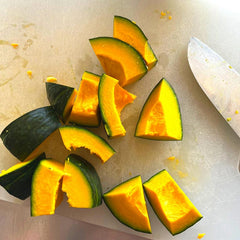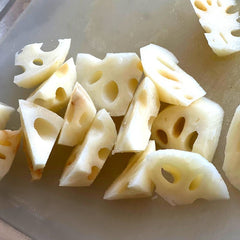
The Easy Hijiki Seaweed Recipe You Can Make Within 30 Minutes

What Is Hijiki?
Hijiki (Sargassum fusiforme, ヒジキ, 鹿尾菜 or 羊栖菜) is an edible seaweed with a earthy flavor, and has been a part of Japanese, Chinese, and Korean cuisine for centuries.
In Japan, hijiki is one of the food that parents would like their children to eat due to its high content of minerals and is considered as a nutrient dense superfoods (although my parents didn't use that word, I'm sure it will fall in that category!)
Hijiki is versatile and can be served with many other ingredients like, edamame, kabocha, mushrooms, konjac, tofu, fried tofu, lotus roots and the list goes on. Basically, whatever is in season can be cooked with hijiki and be served!
In Japan, there are two types of hijiki: the longer and tougher stems are called naga hijiki (長ひじき: meaning long hijiki) and they look like black spaghetti after its cooked, and the shorter type called me hijiki (芽ひじき:meaning hijiki sprouts) that looks like tea leaves. They can both be prepared in the same way and can be replaced by one or another.
What Are The Benefits Of Hijiki?
Like many other sea vegetables, hijiki is is one of those nutrient dense, low calory superfood.
- high in dietary fiber
- high in essential vitamins such as vitamin K
- high in essential minerals such as iron, calcium, iodine, and magnesium
- low in calories
What Does Hijiki Taste Like?
Hijiki has a savory and earthy flavor. Some describe it as 'mushroom-like' but to me, growing up with eating a lot of seaweed, hijiki does taste like seaweed!
Hijiki seaweed can be very neutral as long as you do the prep properly. If you skipped the soaking and rinsing of the hijiki, you will have a very strong ocean flavor taking over your entire dish. But not to worry, the prep is very easy. (I've shoed the steps with photos in this hijiki recipe) 
Many hijiki salad recipes calls for soy sauce but I have replaced this with shio koji for a lighter color and a different kind of umami. Let me know what you think!
Hijiki salad with Kabocha and Lotus Roots flavoured with shio koji
Ingredients
(4 servings)
● 20g, dried hijiki seaweed
● 500g, kabocha pumpkin
● 200g, lotus root
● 6 pc., French beans
● 2 Tbsp., frying oil (fragrance free coconut oil)
● 500ml., water
● 2 Tbsp., tsuyu broth
● 1 Tbsp., mirin
● 1 Tbsp., monkfruit sweetener
● 3 Tbsp., brown rice shio koji
Instructions:
- Soak the dried hijiki in water for about 10 minutes. Rinse well and drain water. Set aside.



- To prepare the pumpkin, remove the seeds and cut into bite size. Chamfer the edges of the pumpkin to avoid the pumpkin to fall apart while cooking. This is a common technique used in Japanese cooking called ‘mendori (面どり)’. As we are using organic pumpkin in this recipe, peeling of the skin has been omitted.




- Peel the skin of the lotus and cut into bite size. For the French beans, remove the strings, cut in half and set aside. In a separate pot, boil the French beans for 30 seconds with a pinch of salt and quickly remove from the heat and cool off with cold water. This will keep the vibrant green colour from fading.



- Heat up the pot with the frying oil in and cook the lotus root for about 5 minutes. It will start to turn translucent. Add the pumpkin into the pot and cook for another 5 minutes. Add the hijiki seaweed and cook so that all ingredients are coated with oil and add the water an bring to a simmer.




- Mix the tsuyu broth, mirin and monkfruit sweetener in a small bowl and pour that in to the simmering pot. Once the liquid has become less (but not completely disappearing!) turn off the flame and add the shio koji to taste. You might want to adjust the amount of shio koji to your liking. Plate the cooked salad with the French beans and serve. It can be served both hot or cold.




Leave a comment